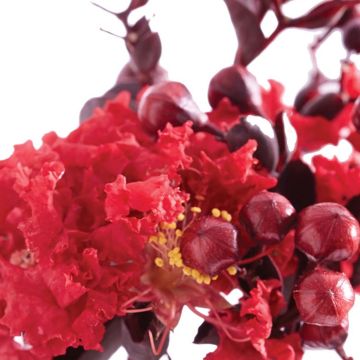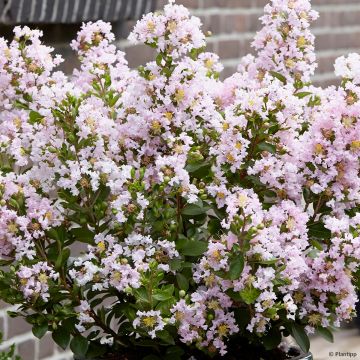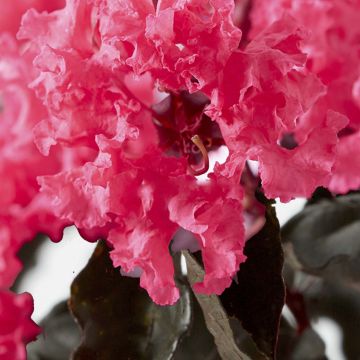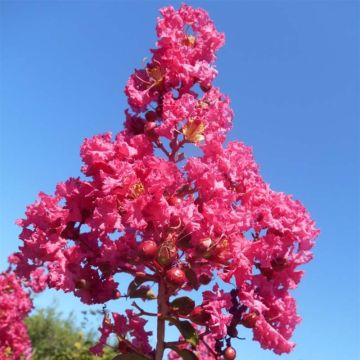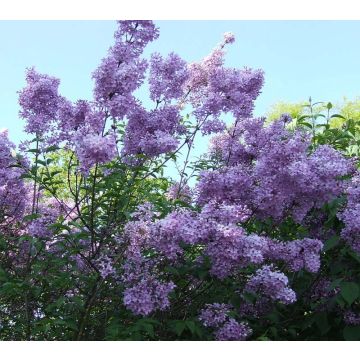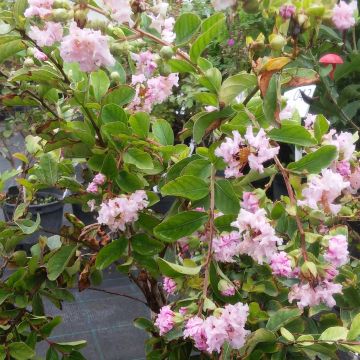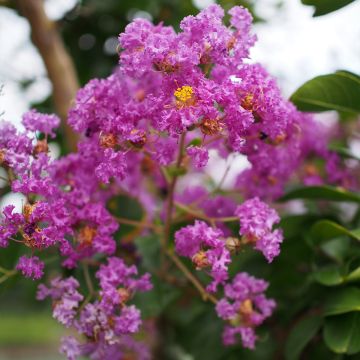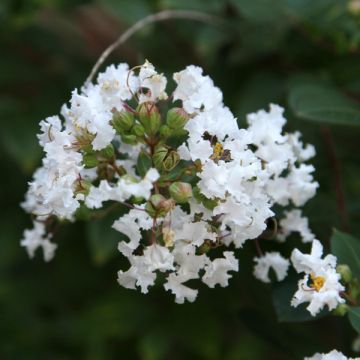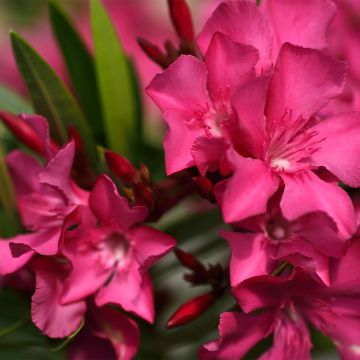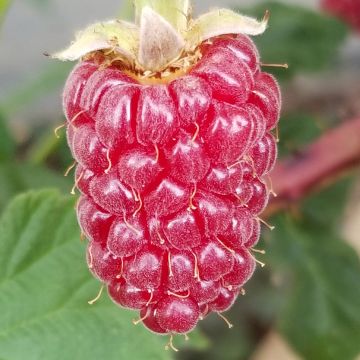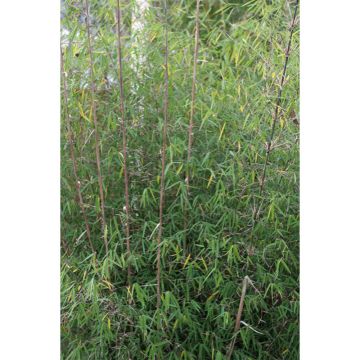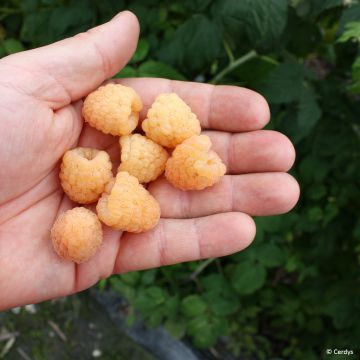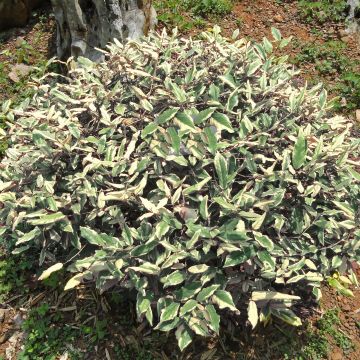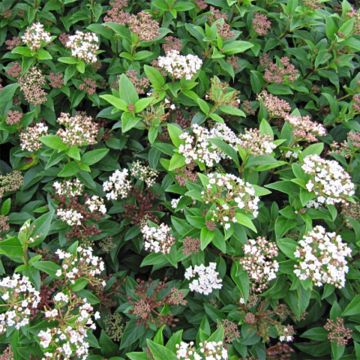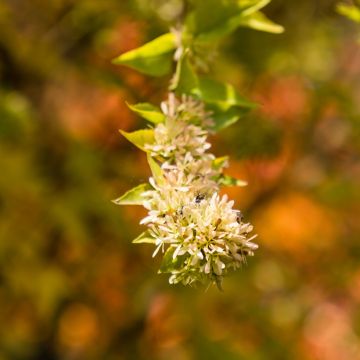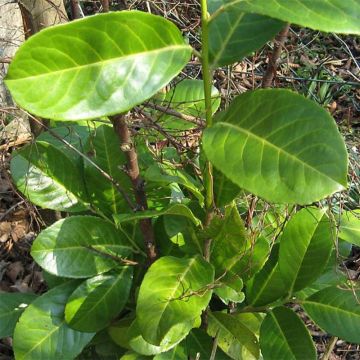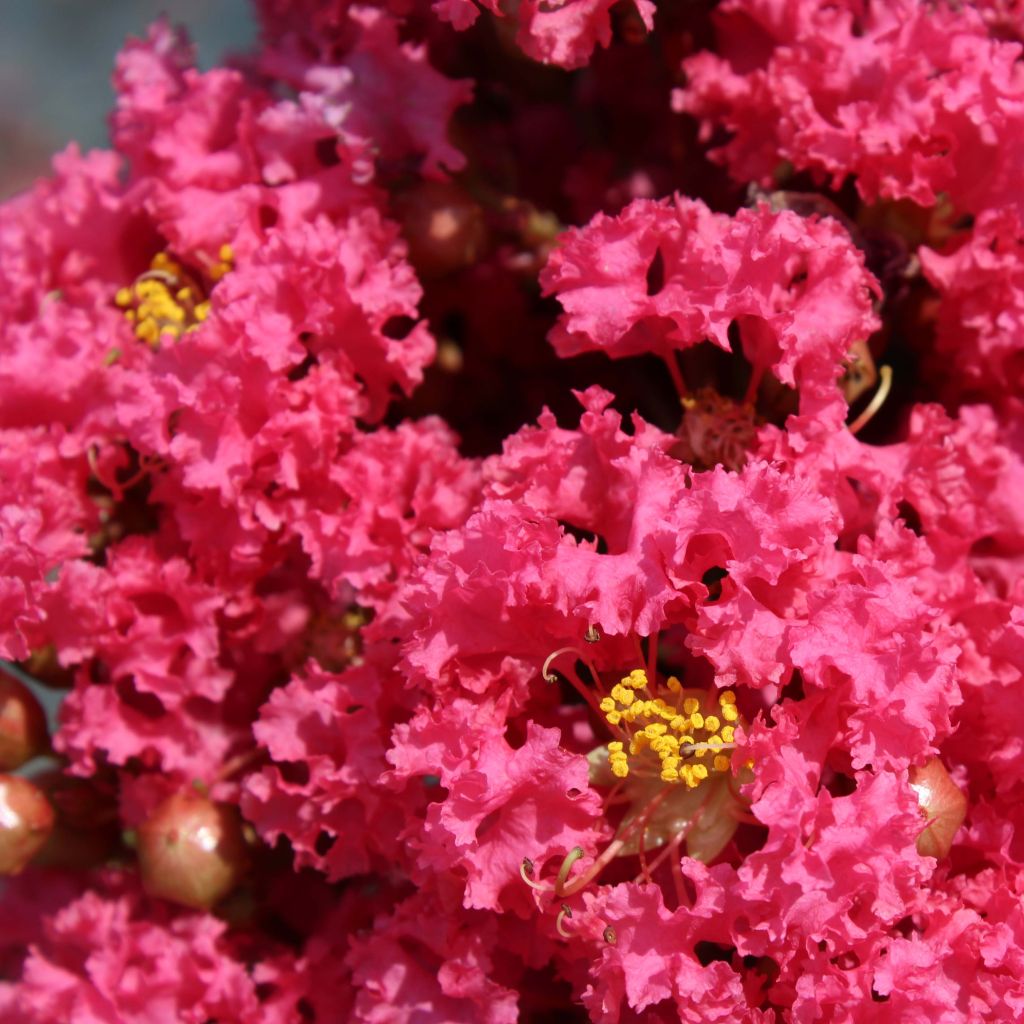

Lagerstroemia indica Grand Cru - Lilas des Indes
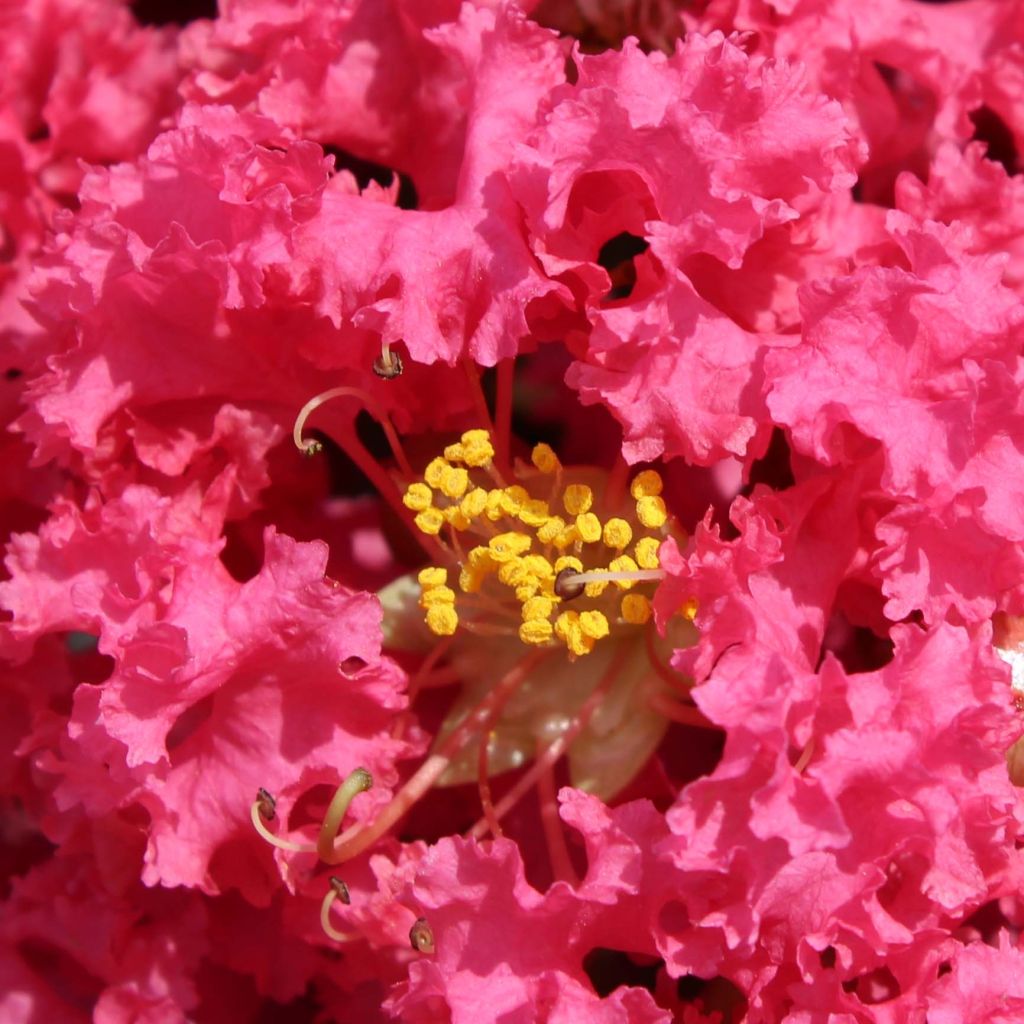

Lagerstroemia indica Grand Cru - Lilas des Indes
Lagerstroemia indica Grand Cru - Crape Myrtle
Lagerstroemia indica Grand Cru
Crape Myrtle, Crepe Myrtle, Indian Lilac
Hello, The Indian lilac planted on 28/9/2022 with good soil and regularly watered in the following months apparently did not survive the winter. The branches are all dry and there is no sign of spring bud. We are in a region (Anjou-Touraine) where this type of bush grows very well. In my opinion, it is dead. Really disappointed! Best regards,
Dominique D., 11/04/2023
This item cannot be shipped to the selected country
Delivery charge from €5.90
Delivery to Corse prohibited
More information
Schedule delivery date,
and select date in basket
This plant carries a 24 months recovery warranty
More information
We guarantee the quality of our plants for a full growing cycle, and will replace at our expense any plant that fails to recover under normal climatic and planting conditions.
From €5.90 for pickup delivery and €6.90 for home delivery
Express home delivery from €8.90.
Delivery to Corse prohibited: UE law prohibits the import of this plant from mainland France to Corse as part of the fight against Xylella fastidiosa. Please accept our sincere apologies.
More information
Does this plant fit my garden?
Set up your Plantfit profile →
Description
The Lagerstroemia indica 'Grand Cru' is a late flowering Indian Lilac with spectacular large panicles of blood red to coral red flowers. Its deciduous foliage, tinged with red in spring, becomes glossy green in summer and then turns orange-red in autumn. This very vigorous bush can quickly become a small tree if patiently and meticulously pruned. Thirsty for sun and heat, this variety will thrive best in southern regions. With multiple advantages, Indian Lilacs are among the most beautiful summer flowering bushes. As such, they deserve a special place in the garden or on the terrace. The 'Grand Cru' cultivar is particularly resistant to powdery mildew.
The Lagerstroemia indica 'Grand Cru' belongs to the Lythraceae family. The Lagerstroemia indica, from which it originates, is native to China. 'Grand Cru' was selected in 2003 at the Demartis nursery in Dordogne, where it is also sometimes called the "Lilac of the Harvest". This very vigorous bush will reach a height of 3 to 5m (10 to 16ft) at maturity, with a diameter of approximately 3m (10ft). Its growth is quite rapid. Its flowering generally begins in August and continues until October. The flowers are characterised by thin pedicels, each carrying five undulate-edged petals that make up this flower. The flowers, with a texture reminiscent of crepe paper, are gathered in large, dense panicles at the ends of the current year's branches. In 'Grand Cru', the flowering is scarlet red to coral red. The foliage, tough and deciduous, emerges red and becomes shiny dark green. It consists of small ovate leaves, which take on beautiful orange-red hues in autumn, depending on the climate. Finally, and to finish in beauty, its bark is stunning, smooth, beige with brown-red stripes, peeling off in coloured patches (cinnamon, faded red, old rose, cream).
The 'Grand Cru' cultivar will express its full potential in regions with a temperate oceanic climate and a south-facing exposure. It will stand out when planted near the house, allowing you to fully enjoy its generosity. It will make a good impression in a shrub border, a flowering hedge, or emerging from a mound of perennials. Create a border like a bouquet, with Campanula pyramidalis, Salvia sclarea, Aster laevis. In autumn, it accompanies the asters, as colourful as itself. In a large pot on the terrace, it puts on a show while summer flowering fades. You could plant a weaving of thymes, oreganos, and silver baskets to dress the base of its trunk, highlight its bark, and reflect its sparkling flowering.
NB: Carl Linnaeus named this tree to honor his friend Magnus Von Lagestroem (1696 - 1759), who had sent it to him from India for identification. Originally, this tree was used to decorate Chinese temples. We would like to point out that this tree produces fruits with a narcotic effect if ingested.
Report an error about the product description
Lagerstroemia indica Grand Cru - Crape Myrtle in pictures


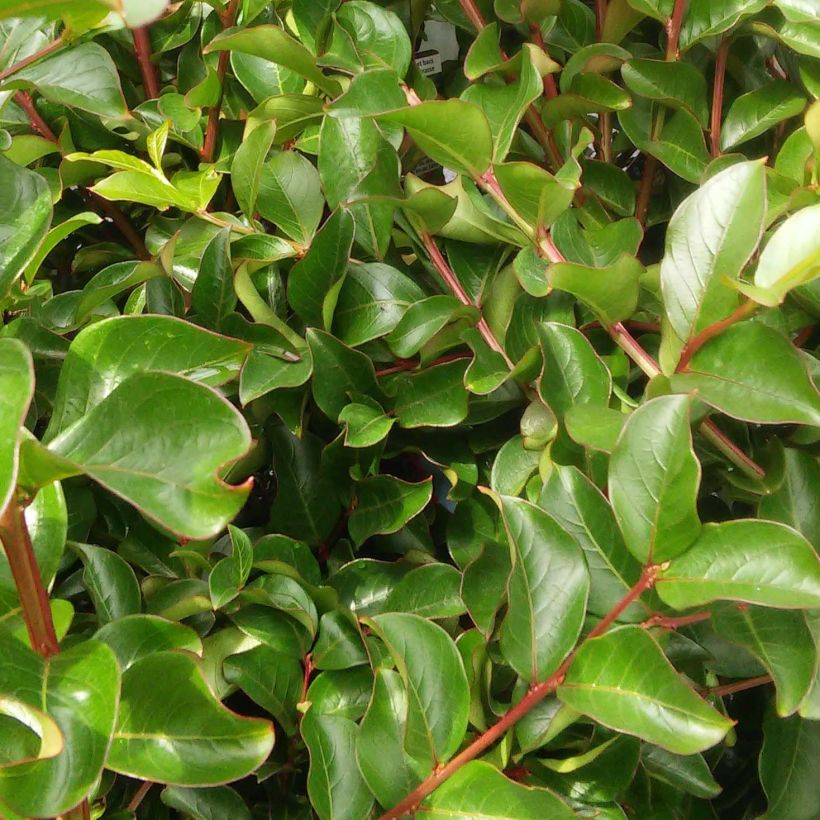

Plant habit
Flowering
Foliage
Botanical data
Lagerstroemia
indica
Grand Cru
Lythraceae
Crape Myrtle, Crepe Myrtle, Indian Lilac
Cultivar or hybrid
Other Lagerstroemia - Crape Myrtle
Planting and care
The Lagerstroemia indica 'Grand Cru' is planted in spring in well-drained and rich soil in a warm and sunny location. Every year, enrich the soil around the plant with decomposed manure and leaf compost. Prune back in spring, leaving only two or three buds per branch. Treat for powdery mildew. In cold regions, wrap the branches in a winter protection fleece throughout the winter.
Planting period
Intended location
Care
-
, onOrder confirmed
Reply from on Promesse de fleurs
Hedge shrubs
Haven't found what you were looking for?
Hardiness is the lowest winter temperature a plant can endure without suffering serious damage or even dying. However, hardiness is affected by location (a sheltered area, such as a patio), protection (winter cover) and soil type (hardiness is improved by well-drained soil).

Photo Sharing Terms & Conditions
In order to encourage gardeners to interact and share their experiences, Promesse de fleurs offers various media enabling content to be uploaded onto its Site - in particular via the ‘Photo sharing’ module.
The User agrees to refrain from:
- Posting any content that is illegal, prejudicial, insulting, racist, inciteful to hatred, revisionist, contrary to public decency, that infringes on privacy or on the privacy rights of third parties, in particular the publicity rights of persons and goods, intellectual property rights, or the right to privacy.
- Submitting content on behalf of a third party;
- Impersonate the identity of a third party and/or publish any personal information about a third party;
In general, the User undertakes to refrain from any unethical behaviour.
All Content (in particular text, comments, files, images, photos, videos, creative works, etc.), which may be subject to property or intellectual property rights, image or other private rights, shall remain the property of the User, subject to the limited rights granted by the terms of the licence granted by Promesse de fleurs as stated below. Users are at liberty to publish or not to publish such Content on the Site, notably via the ‘Photo Sharing’ facility, and accept that this Content shall be made public and freely accessible, notably on the Internet.
Users further acknowledge, undertake to have ,and guarantee that they hold all necessary rights and permissions to publish such material on the Site, in particular with regard to the legislation in force pertaining to any privacy, property, intellectual property, image, or contractual rights, or rights of any other nature. By publishing such Content on the Site, Users acknowledge accepting full liability as publishers of the Content within the meaning of the law, and grant Promesse de fleurs, free of charge, an inclusive, worldwide licence for the said Content for the entire duration of its publication, including all reproduction, representation, up/downloading, displaying, performing, transmission, and storage rights.
Users also grant permission for their name to be linked to the Content and accept that this link may not always be made available.
By engaging in posting material, Users consent to their Content becoming automatically accessible on the Internet, in particular on other sites and/or blogs and/or web pages of the Promesse de fleurs site, including in particular social pages and the Promesse de fleurs catalogue.
Users may secure the removal of entrusted content free of charge by issuing a simple request via our contact form.
The flowering period indicated on our website applies to countries and regions located in USDA zone 8 (France, the United Kingdom, Ireland, the Netherlands, etc.)
It will vary according to where you live:
- In zones 9 to 10 (Italy, Spain, Greece, etc.), flowering will occur about 2 to 4 weeks earlier.
- In zones 6 to 7 (Germany, Poland, Slovenia, and lower mountainous regions), flowering will be delayed by 2 to 3 weeks.
- In zone 5 (Central Europe, Scandinavia), blooming will be delayed by 3 to 5 weeks.
In temperate climates, pruning of spring-flowering shrubs (forsythia, spireas, etc.) should be done just after flowering.
Pruning of summer-flowering shrubs (Indian Lilac, Perovskia, etc.) can be done in winter or spring.
In cold regions as well as with frost-sensitive plants, avoid pruning too early when severe frosts may still occur.
The planting period indicated on our website applies to countries and regions located in USDA zone 8 (France, United Kingdom, Ireland, Netherlands).
It will vary according to where you live:
- In Mediterranean zones (Marseille, Madrid, Milan, etc.), autumn and winter are the best planting periods.
- In continental zones (Strasbourg, Munich, Vienna, etc.), delay planting by 2 to 3 weeks in spring and bring it forward by 2 to 4 weeks in autumn.
- In mountainous regions (the Alps, Pyrenees, Carpathians, etc.), it is best to plant in late spring (May-June) or late summer (August-September).
The harvesting period indicated on our website applies to countries and regions in USDA zone 8 (France, England, Ireland, the Netherlands).
In colder areas (Scandinavia, Poland, Austria...) fruit and vegetable harvests are likely to be delayed by 3-4 weeks.
In warmer areas (Italy, Spain, Greece, etc.), harvesting will probably take place earlier, depending on weather conditions.
The sowing periods indicated on our website apply to countries and regions within USDA Zone 8 (France, UK, Ireland, Netherlands).
In colder areas (Scandinavia, Poland, Austria...), delay any outdoor sowing by 3-4 weeks, or sow under glass.
In warmer climes (Italy, Spain, Greece, etc.), bring outdoor sowing forward by a few weeks.

































